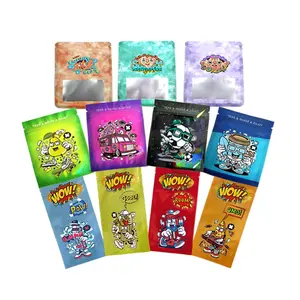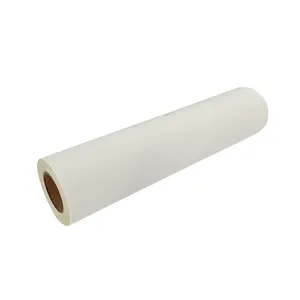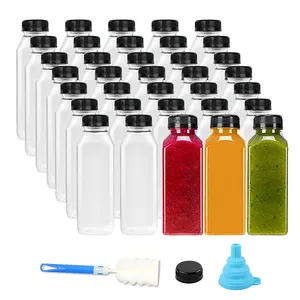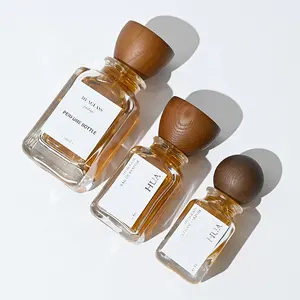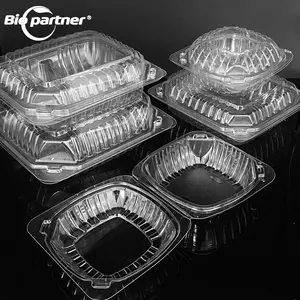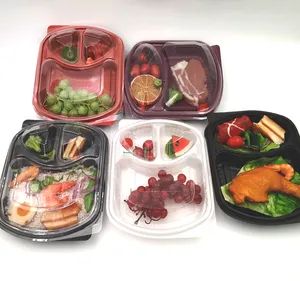Popular in your industry


















 Ready to Ship
Ready to Ship


















Related Searches:

















































































































Top categories
About plastic jelly container
What is Jelly Container Made Of Plastic
Jelly containers made of plastic are versatile and practical solutions for storing a wide variety of food items, including but not limited to, noodles, baby food, potato chips, lollipops, and pet food. These containers are designed to protect the contents from external factors such as moisture, air, and contaminants, while also offering ease of access with their transparent walls. The use of plastic in jelly containers is advantageous due to its durable nature, ease of cleaning, and the fact that it is generally lightweight compared to glass or metal.
The primary users of jelly containers made of plastic include food manufacturers, retailers, wholesalers, and individuals who package and preserve homemade goods. The principles on which these containers operate are fairly straightforward: they provide a secure and hygienic environment for food storage, often featuring airtight or resealable properties to maintain freshness. The materials used in these containers are selected for their food-grade quality and are BPA-free to ensure that stored items are safe for consumption.
Jelly containers made of plastic are available in a range of sizes, shapes, and designs to accommodate different types of products and storage needs. From small, single-serving containers for individual portions to larger options for family-sized portions or commercial use, these containers are tailored to meet specific requirements. Manufacturers also consider factors such as stackability, ease of labeling, and the ability to withstand various temperatures when designing these products.
Types of Jelly Containers Made of Plastic
Jelly containers come in various types to suit different food packaging needs. Here are some common types:
-
Round Jelly Containers: These are the classic shape for jelly containers. They are often used for packaging a wide range of food items from noodles to baby food. The round design allows for easy stirring and is convenient for single-serving portions.
-
Square Jelly Containers: With their straight edges and stackable design, square jelly containers maximize space efficiency and are ideal for products that are typically sold in bulk like potato chips or pet food. The square shape also aligns with modern aesthetics.
-
Specialty Jelly Containers: Some jelly containers feature unique shapes like hearts or stars. These are particularly appealing for children's snacks or special occasions such as Valentine's Day or Christmas-themed events.
-
Customized Jelly Containers: These allow for branding opportunities through label designs or embossing. They can be tailored to specific sizes and shapes, making them versatile for various marketing strategies.
How to choose Jelly Container Made Of Plastic
Selecting the right jelly container made of plastic involves considering several factors that align with your specific business needs. For those in the food industry looking to package products such as sauces, dressings, or pre-mixed drinks, it's crucial to choose containers that provide an airtight seal and are suitable for refrigeration. When dealing with products like candy or lollipops, opting for containers that allow for easy display while keeping the product fresh are important.
The type of food being packaged also dictates the choice of container. For instance, noodle containers should have a tall and narrow design to accommodate the length of the noodles. Conversely, pet food containers need to be sturdy and often come with features like airtight seals and waterproofing to protect the food inside.
Additionally, businesses should consider ease of use and storage. Containers with snap-on lids or handles can offer convenience to the end user. It's also beneficial to choose stackable options for efficient storage. Material safety is another vital consideration; food-grade plastics that are BPA-free and microwave-safe are essential when dealing with consumables.
Lastly, businesses must factor in cost-effectiveness when making bulk purchases on Alibaba.com. The platform offers various payment options and shipping methods to cater to different business models—whether you're a small startup in need of wholesale quantities or a large corporation looking for reliable suppliers for mass-produced goods.
About Jelly Container Made Of Plastic on Alibaba.com
For businesses seeking reliable solutions for preserving and presenting their jelly products effectively, Alibaba.com stands out as an exceptional marketplace offering an extensive array of jelly containers made from various materials such as plastic. The platform's global reach connects buyers with suppliers from all over the world, providing access to a diverse range of container options that can cater to any business's unique needs—from small-scale home kitchen operations to large commercial enterprises.
Alibaba.com's commitment to facilitating seamless trade is evident through its user-friendly interface that allows buyers to communicate with suppliers in their local language, manage orders efficiently, and utilize services like Trade Assurance for payment protection—ensuring peace of mind when it comes to business transactions. Furthermore, the platform's ability to accommodate custom requirements makes it an invaluable resource for businesses looking to source containers that align perfectly with their brand image and product specifications.
With over two decades of experience in e-commerce trade solutions, Alibaba.com has established itself as a trusted ally for small and medium-sized businesses worldwide. Its dedication to providing tailored trading experiences makes it an ideal destination for sourcing high-quality jelly containers that will help businesses grow their reach and fulfill their packaging needs without compromising on quality or service reliability.
Common FAQs for Jelly Container Made Of Plastic
What are the key features to look for in a quality jelly container made of plastic for commercial use?
When selecting a jelly container for commercial use, consider features such as durability, ease of cleaning, material safety (BPA-free), and whether the container is suitable for the specific type of jelly or food being stored. Also, assess whether the container is designed for the application's required temperature range and if it is stackable to optimize storage space.
How can I ensure the jelly containers I purchase are safe for food storage?
To ensure safety, choose containers that are explicitly labeled as food-grade and made from materials that are known to be safe, such as polypropylene (PP) or polyethylene (PE). These types of plastics have been tested and approved for food storage and are widely used in the food industry.
Are there eco-friendly options available for jelly containers?
Yes, there are eco-friendly options made from biodegradable or recyclable materials. When purchasing in bulk, consider suppliers that offer these types of containers if environmental impact is a concern for your business.
How do I choose the right size of jelly container for my business's needs?
The right size depends on the quantity of jelly or food you need to store and the dimensions of your storage space. Consider the volume of product you plan to store and choose a container that can accommodate your requirements efficiently.
Can I find customizable jelly containers on Alibaba.com?
Yes, many suppliers on Alibaba.com offer customizable options for jelly containers, including size, shape, color, and material. Customization can include branding with logos or specific design modifications to meet your business needs.
What types of closures are available for jelly containers?
Jelly containers typically feature airtight seals such as screw caps or snap-on lids that help to preserve the freshness and extend the shelf life of the contents.
How do I choose between different materials like PP (Polypropylene) and PET (Polyethylene Terephthalate) for my jelly container?
Choose a material that aligns with your product's requirements. For example, PP containers may be more durable for shipping while PET offers better visibility for displaying products.
What is the difference between airtight and non-airtight jelly containers?
Airtight containers are designed to completely seal off air and moisture from entering, while non-airtight containers may allow some air and can be more suitable for products that do not require a completely sealed environment.
How does the temperature resistance of a jelly container impact its suitability for different products?
The temperature resistance of a jelly container determines its suitability for hot or cold storage. PP and PET containers are generally less resistant to extreme temperatures compared to glass containers.
Can I use a single type of jelly container for different storage needs?
Some containers are multi-purpose and can be used for various types of food items. However, it's best to have dedicated containers for specific products to prevent any cross-contamination or flavor transfer.
Are there any considerations for using metal jelly containers for products like jams or pickles?
When using metal jelly containers, consider the acidity of the contents as some metals may react with certain foods. It's also important to ensure they are designed to prevent any metallic taste or corrosion.
What should I look for if I need a travel-friendly jelly container?
For travel-friendly containers, look for compact sizes, secure closures, and materials that can withstand changes in pressure and temperature. Silicone options are flexible and lightweight.
Is it possible to find insulated jelly containers that keep food warm or cool during transportation?
Yes, insulated jelly containers are available which can keep food warm or cool using various insulating materials and designs tailored for temperature regulation during transportation.
How does the shape of a jelly container affect its utility?
The shape of the jelly container can affect its utility by determining how efficiently it serves its intended purpose. For example, square or round containers may be more space-efficient while still allowing for easy stacking.
